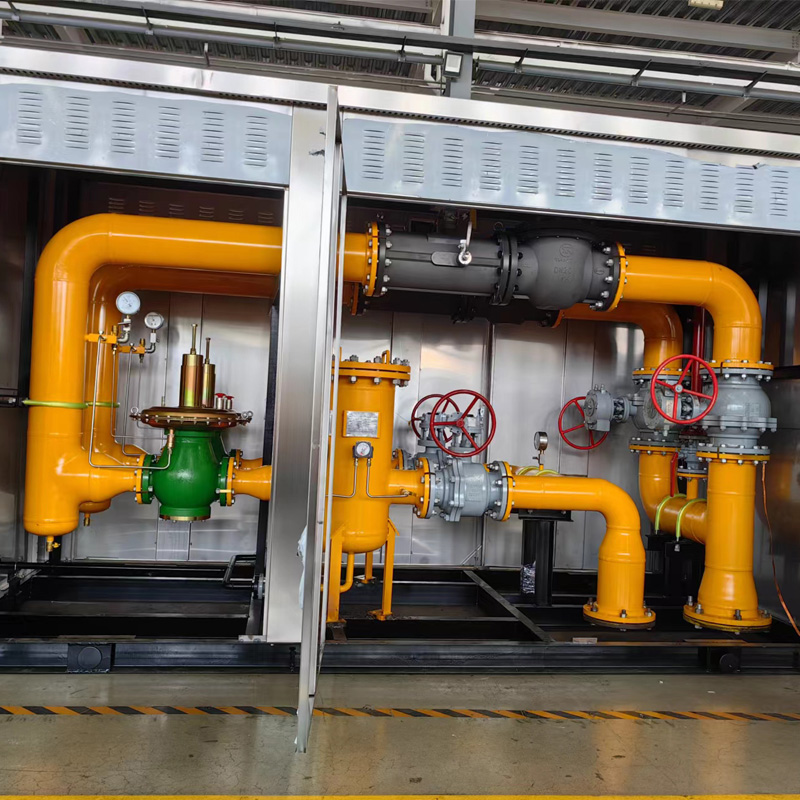
Sep . 24, 2024 01:30
Back to list
Gas Pressure Relief Valve Functions and Applications in Industrial Systems
The Significance of Gas Pressure Reducing Valves in Industrial Applications
In industrial settings, the management of gas pressure is crucial for ensuring safety, efficiency, and optimal functioning of equipment. Among the various components that play a vital role in gas pressure management, the gas pressure reducing valve (PRV) stands out as an essential device. This article explores the functionality, importance, and application of gas pressure reducing valves in various industries.
A gas pressure reducing valve is a mechanical device that regulates the pressure of gas in a pipeline system. Its primary function is to lower the incoming high pressure of gas from a supply source to a stable, specified level before it enters the downstream equipment or process. This regulation is vital because excessive gas pressure can lead to equipment damage, safety hazards, and inefficient operation of the system.
.
In terms of safety, PRVs are instrumental in preventing over-pressurization in gas distribution systems. Over-pressurization can cause serious accidents, including explosions or catastrophic failures of gas pipelines. By effectively managing and reducing excess pressure, PRVs protect not only the equipment but also the personnel and infrastructure associated with the gas system.
صمام تخفيض ضغط الغاز

Furthermore, the energy efficiency of gas systems is significantly improved with the implementation of pressure reducing valves. By ensuring that gas is delivered at the optimal pressure for each application, PRVs minimize gas wastage and enhance combustion efficiency in industrial burners. This translates to lower operational costs and a reduced carbon footprint, contributing to the push for more sustainable industrial practices.
Gas pressure reducing valves find applications across various industries, including oil and gas, chemical manufacturing, food processing, and power generation. In the oil and gas sector, for instance, PRVs are used in natural gas transmission to ensure that the gas reaches consumers at safe and usable pressures. In chemical manufacturing, maintaining precise pressure is essential for ensuring product quality and safety during production processes.
Regular maintenance and inspection of gas pressure reducing valves are crucial to ensure their reliability and optimal performance. Operators must be attentive to signs of wear or malfunction, as these can lead to pressure inconsistencies and potential hazards. Timely replacement of worn parts and adherence to manufacturer guidelines can significantly extend the lifespan of PRVs.
In conclusion, gas pressure reducing valves play a pivotal role in the safe and efficient management of gas systems across various industries. Their ability to regulate pressure not only protects equipment and personnel but also enhances operational efficiency and contributes to energy conservation. As industries continue to pursue safer and more sustainable practices, the significance of PRVs will remain paramount, ensuring that gas is handled with the utmost care and precision.
Latest news
-
Safety Valve Spring-Loaded Design Overpressure ProtectionNewsJul.25,2025
-
Precision Voltage Regulator AC5 Accuracy Grade PerformanceNewsJul.25,2025
-
Natural Gas Pressure Regulating Skid Industrial Pipeline ApplicationsNewsJul.25,2025
-
Natural Gas Filter Stainless Steel Mesh Element DesignNewsJul.25,2025
-
Gas Pressure Regulator Valve Direct-Acting Spring-Loaded DesignNewsJul.25,2025
-
Decompression Equipment Multi-Stage Heat Exchange System DesignNewsJul.25,2025

